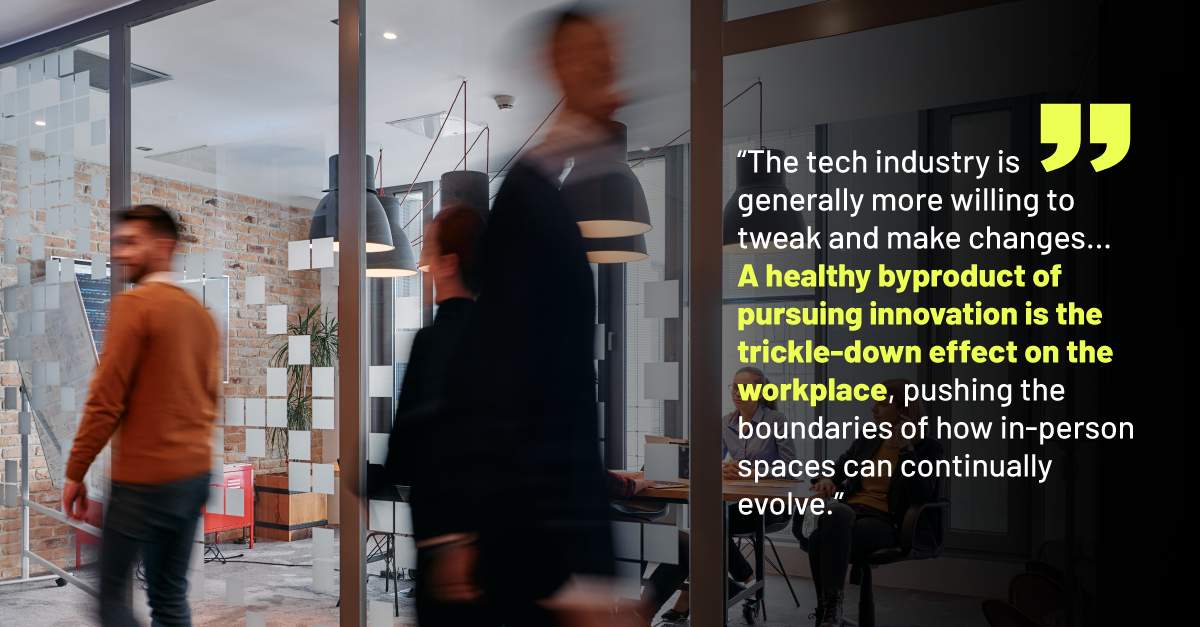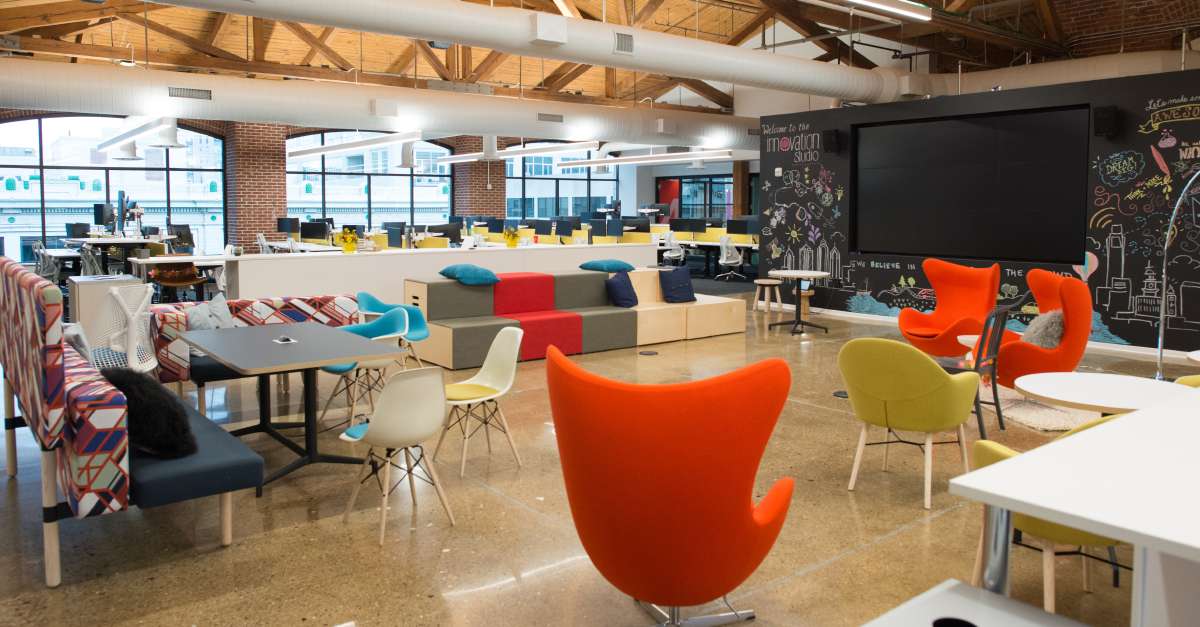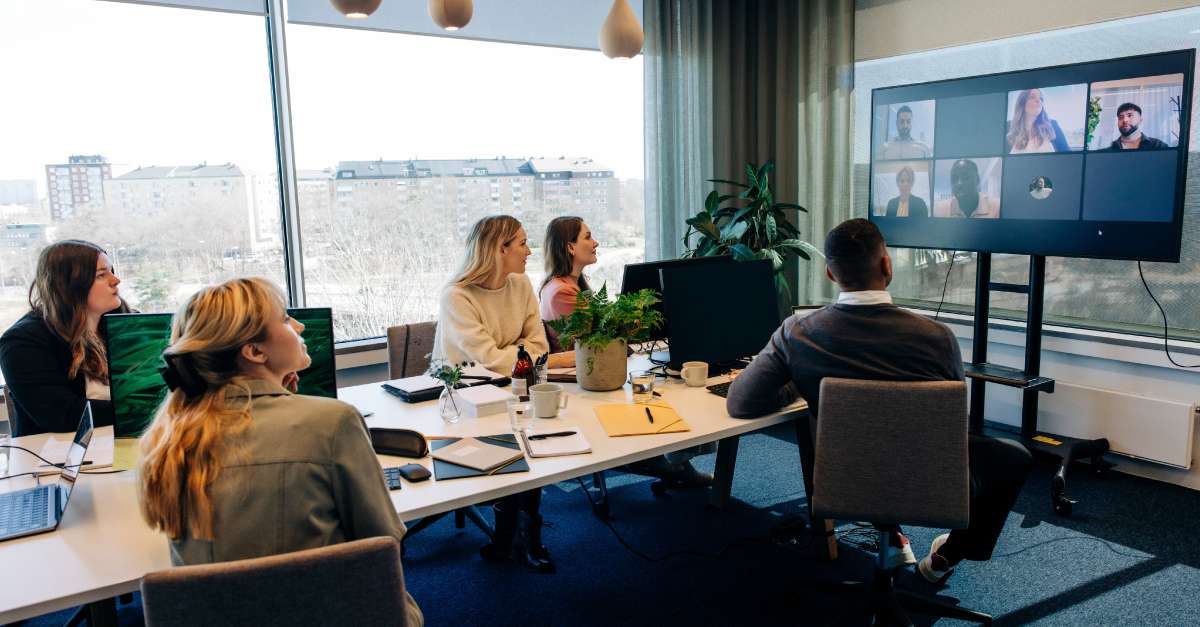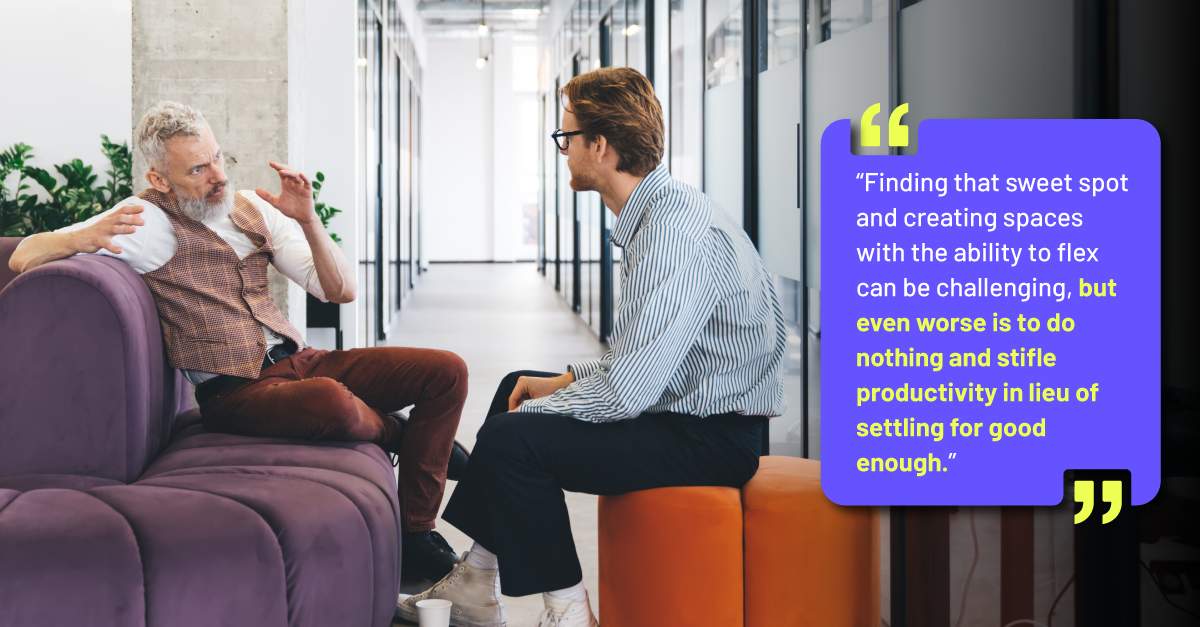Not everything we are seeing in workplace strategy and design is worth emulating. Strategic Workplace Planning pundit Christopher Hom has been in the zeitgeist of workplace trends for decades, working with leading Silicon Valley companies. He walks us through evolving and elusive trends and his thoughts on whether to avoid or embrace them.
We are still in the evolution of hybrid working, and today’s offices are continuing to morph, leaning into an agile methodology and innovation. Creating productive and engaging work environments is a moving target, so enterprise leaders and teams need to make every effort to stay at the forefront of workplace trends and be willing to embrace the unknown.
To kick us off, I intend to draw from my experience of working with tech companies on strategic workplace planning, technology, and agile methodology. We can all learn from companies doing well to create spaces that respond to how people work in 2024.
Let’s take a closer look at the good (positive trends), the bad (challenges and concerns), and the ugly (pitfalls to avoid).
Current workplace trends in 2024
Everyone is trying to figure out the Rubik’s cube of what the workplace will be. Arguably, there are no right or wrong answers because there’s so much fluidity to the whole notion of where we’re going—we will need time to sift through the inevitably numerous spatial iterations.
The tech industry is generally more willing to tweak and make changes, while other business sectors lean more towards conservatism and less appetite for change. The advantage of tech is that it’s never comfortable with present-day success. A healthy byproduct of pursuing innovation is the trickle-down effect on the workplace, pushing the boundaries of how in-person spaces can continually evolve.
This is a great attitude, but it does come with its own set of challenges because self-improvement doesn’t guarantee success. As such, these risk-reward scenarios need to be carefully assessed. Another important consideration is the company’s culture: does it embrace, encourage, or resist change? All of these factors figure into the calculus of change.

The last variable comes from our friends in finance; their influence and the omnipresent view of ROI and revenue vs. expense have always been important ingredients of the secret sauce that drives all companies. But there has been a harder lean into these factors of late, and need to be part of the consideration when following the recipe for a successful workplace.
Overarching themes shaping future workspaces
Successful design enables all types of people to get the maximum experience from a given space because none of us are created the same way. It should be able to respond and allow for differences in the individual interpretation of that space.
Apple is famous for taking the design of its products and workplace very seriously. This approach is something that all companies should pursue, but under Steve Job’s influence, he saw the workplace almost as a piece of art. Where they have taken design is remarkable but there is danger when the pursuit can become too precious.
They place a premium on exceptional design, and you are supposed to be tidy, but this doesn’t reflect how many people operate. So, the lesson is that good design should respond to all people; the tidy and the not so much.
Good design needs to respond to all types of behavior and enhance that experience, whatever that might be, and for whomever the individual is. The key is to build modularity into spaces. Premium offices like Apple’s have a place in the world, but they also shouldn’t be “too precious to break” and must encourage people to make spaces their own.
The Good: Positive trends in workplace design and culture
The biggest positive takeaway is that the notion of one-size-fits-all is being questioned. We can now create various spaces to accommodate different needs and functions.
In the pre-Covid days, there was a long-standing trend of having one person to one desk, allowing people to feel a sense of property or possession.
Now, people’s behaviors and work have changed because a significant percentage of staff don’t come to the office daily or sit in the same place. Spaces must now grow to respond to individual requirements.
No matter what you come up with, you won’t get everything right. It’s about devising a series of design parameters and programmatic solutions that meet most people’s needs and minimize the number of exceptions.

From that vantage point, it’s an exciting time because it will force innovation as necessity has always been the driver for new, innovative, and productive ways to work.
The architectural community, working with the furniture manufacturers and industrial designers will develop new products that tie into technological advancements to create new solutions to fill the current gap in the workplace.
Companies improving employee experience and productivity
Meta has made in-roads towards cracking its DNA of what the office might look like but like the search for the Holy Grail, the ideal workplace remains elusive.
Google also does it well in a different fashion. I have long admired them because they constantly push the boundaries of new solutions more than any other company. Impressively, they even have a building dedicated to exploring different design solutions. Access to these types of resources is incredibly powerful but one potential challenge is exploring change almost seemingly for change’s sake. Most companies would welcome this “problem” but the lesson of continued diligence remains a good one.
As a final example, Nvidia has also created their interpretation of the workplace in their HQ campus by landing on twin triangular buildings that are designed around how people move and creating increased opportunities to collaborate in space that promotes activity.
It is clear that one size does not fit all, and as such, it is vitally important to continue the effort to iterate towards a solution that balances the levers of productivity, culture and efficiency.
The Bad: Challenges emerging in the workplace landscape
The conversation about what hybrid working looks like continues to be a fluid process with just about all companies. A growing minority of individuals may come in every day, while the other side of this discussion is working completely remotely. In between these two bookends are many shades of gray.
Most companies are trying to determine the sweet spot and create space that provides a multitude of offerings and workplace solutions. Is there a way for the spaces to flex depending on whether people come in one day or five days a week?

The “stick” approach of office mandates—i.e., strong recommendations—have often not had the desired response, as reflected in sharp dips in employee satisfaction and workers seeking other opportunities. But the “carrot” continues to hold promise through the attraction of amenities like free/subsidized food, transportation, and fitness centers.
While the attraction of amenities remains vital to our culture, the emphasis is to promote the advantages of productivity and social growth through in-person interaction.
How challenges impact employees and the organization
The Pandemic effectively let the genie out of the bottle in regards to alternative ways of work. Today’s challenge is and will continue to be, finding the proper balance that meets the needs of both the company and the employee. While there is no one-size-fits-all solution, inevitably there will be guiding principles developed that can be adopted and adjusted by all.
The Ugly: Counterproductive trends or practices in workplace design strategy
Some practices are less productive than others. It is not uncommon for companies to take the path of least resistance by staying the course and waiting until a trend is fully baked before making a change. While this “safe” approach has its merits, the downside is a potential loss in productivity and propagating a culture that is less vital and successful than it could be.
In other words, sticking with the status quo and not experimenting, isn’t the way forward—that’s one of the most counterproductive workplace strategies an organization can do.
The Tech sector has a deserved reputation for risk-taking, whether in product development or the workplace. This can result in both success and failure. The key is to find the balance between risk and reward.
How organizations can adapt to and capitalize on evolving workplace trends
Workplace trends have a certain and continuous fluidity, and our responsibility is to inform management on what we are seeing and advise as to whether action should be taken or contemplated.
Data is the currency that seemingly drives all decisions, so it’s critical that it is presented in the most simple and accessible format possible. This may help you persuade management to facilitate change, but if not, a follow-up conversation 6-12 months later will help you avoid the dreaded “one-and-done.”
The principles of change remain pretty constant, regardless of a company’s size, but the why and how around the execution of change can be dramatically different when factoring in portfolio size, corporate culture and the invested level of interest by senior management. Being able to “read a room” remains an important skill set.
Strategies to foster innovation and experimentation in workplace design and strategy
Do your research and stay abreast of product innovations. See what’s happening because of technology and other socioeconomic impacts affecting businesses. Avoid resting on your laurels because we live in an ever-increasing dynamic environment and things can change quickly if we are not paying attention.

For companies that aren’t used to making changes frequently, an effective workaround can be to initiate a small test case and bring about change in a more measured manner.
Consider approaching a group willing to experiment for the potential benefit of increased productivity, work results, or revenue generation. If the results are positive and measurable, you can share the data. Sometimes, initiating change at a grassroots level is easier and more effective, and you stand to gain further by the benefits of word of mouth marketing.
Conclusion
When it comes to workplace trends in 2024, there have been both positive developments and potential challenges.
We are moving away from a one-size-fits-all approach in favor of a workplace that maximizes the experience with a variety of spaces and allows for individual differences.
Finding that sweet spot and creating spaces with the ability to flex can be challenging, but even worse is to do nothing and stifle productivity in lieu of settling for good enough.
Keeping pace with workplace trends is about adapting to the unknown. Maintaining the status quo has been a common choice in the past, but with stakes higher than ever, companies and their staff must now trust their expertise to take bold steps in meeting the challenges of the new workplace.
I encourage you to stay vigilant, flexible, and proactive in navigating the ever-changing landscape of work environments and keep your eyes and ears open to what other companies are doing.
If you’re curious about how much space you really need and the importance of agility, check out my previous blog.
About the author
Christopher Hom is a former executive of real estate, workplace, and facilities for companies in the technology and healthcare sectors. He last worked with Meta/Facebook before retiring and enjoyed a decades-long career that included Apple, Dropbox, Cadence, and Kaiser Permanente, overseeing an aggregate portfolio of 120+M sq ft in over 30 countries. He holds a Bachelor of Arts in Architecture from the University of California, Berkeley.
Enjoying our blog? Be sure to subscribe to stay up-to-date on Saltmine's original content with the form below!


